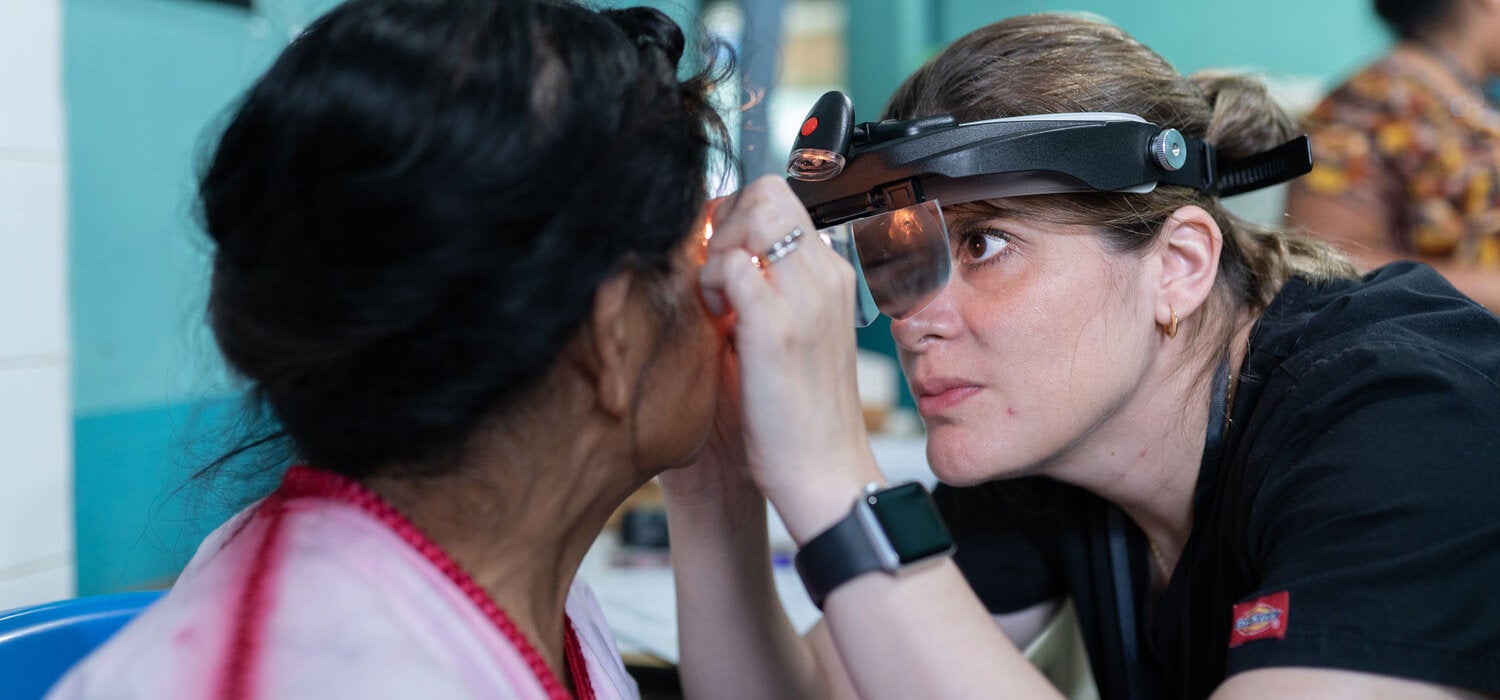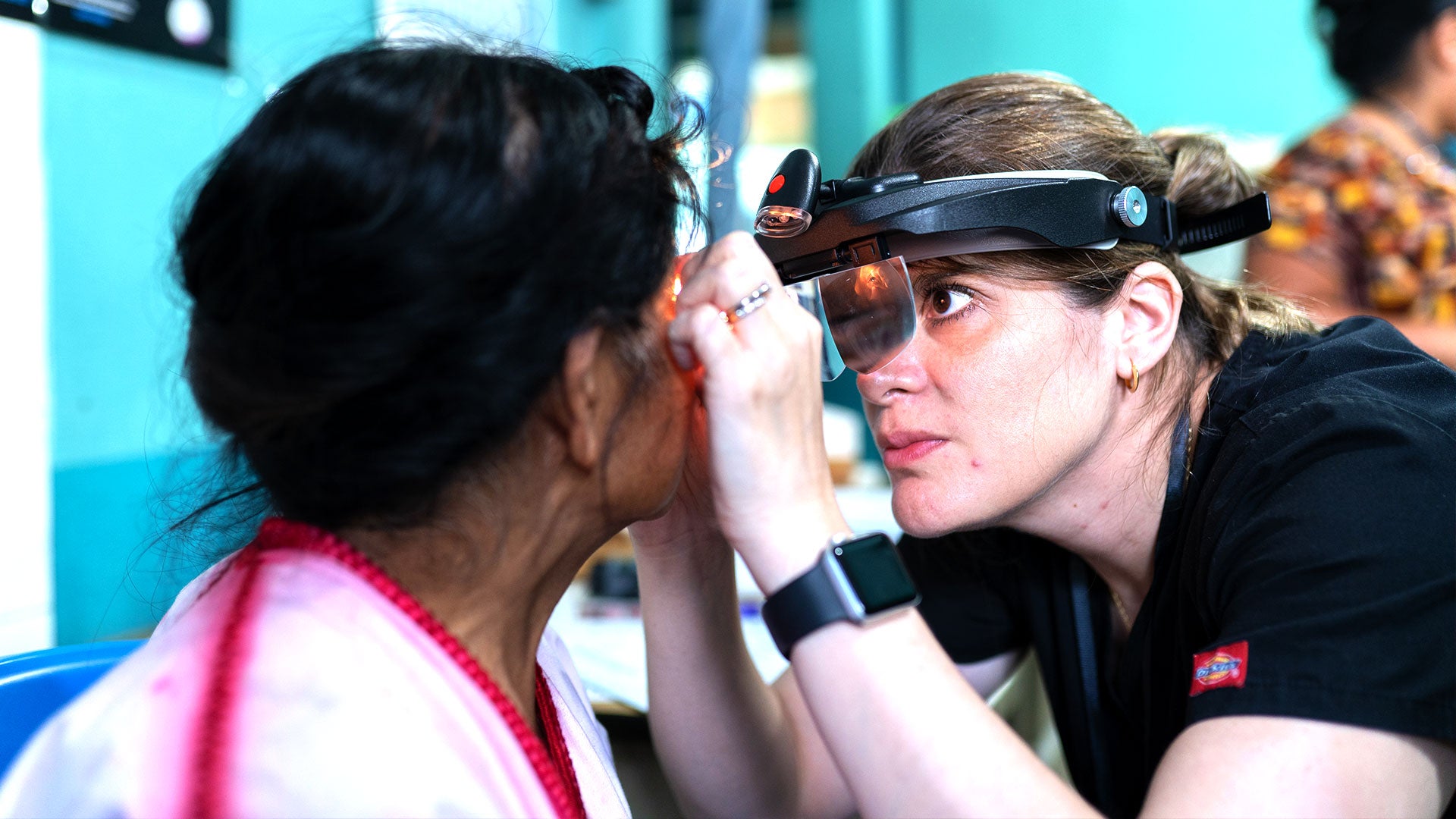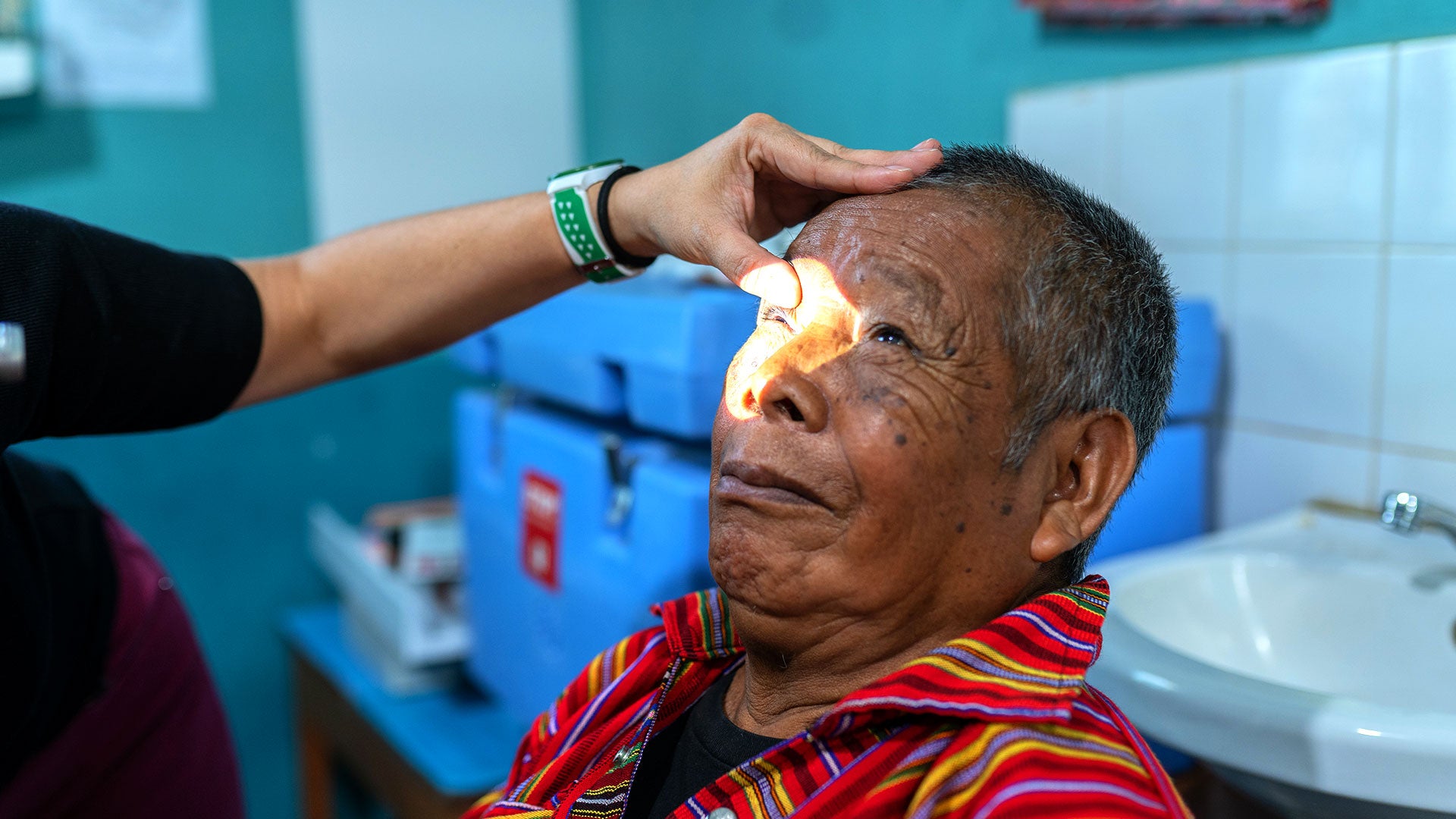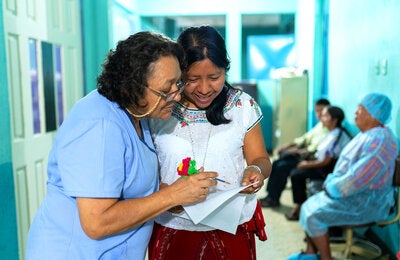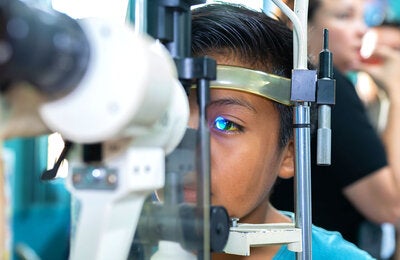Guatemala, December 2019-- Miguel Ixtox is 82 years old and lives in the indigenous community of Guineales in the Boca Region of Guatemala, a humid area characterized by its high temperatures, poverty, and isolation. Miguel has experienced problems with his eyes for the past five years that have left him unable to see properly. Something which began with an irritation has today left him in permanent pain and on the verge of blindness.
Miguel has trachoma, a neglected disease that largely affects communities with high rates of poverty, poor sanitation and a lack of drinking water. However, an interdisciplinary team from a variety of organizations is now working towards the goal of eliminating trachoma from Guatemala by 2020.
An evaluation revealed Guineales to be an area particularly affected by the disease so this year, a day of trachoma surgeries was carried out at the Guineales Center for Maternal and Child Health (CAIMI). “The operations are being carried out by Guatemalan physicians that are being guided and trained by an international team. The country is investing in and training two oculoplastic doctors who will then be responsible for carrying out a second day of surgeries here in Guineales", said Romeo Montoya, Advisor on Communicable Diseases and Health Surveillance at PAHO/WHO in Guatemala.
Guineales is a region with an almost entirely indigenous population where one of the main barriers is the language. However, there is also strong coordination between the community and primary health care centers which has facilitated close contact with patients.
The Ministry of Health, physicians, nurses, and others have all worked together to make this day a success. This was not achieved in a week but is the result of sustained efforts over the past years that are, today, yielding results. We hope that soon we’ll be able to say that Guatemala is a country free from trachoma as a public health problem,” added Montoya.
Work on the elimination of trachoma is led by the Ministry of Public Health and Social Welfare, with support from PAHO/WHO Guatemala. This effort has included a series of actions on eliminating transmission of the disease, including training on facial hygiene and treatment with antibiotics in cases detected early.
Trachoma – a leading cause of blindness
Trachoma in its most serious phase causes the eyelashes to grow inwards towards the eye, rubbing and damaging the cornea. In the most severe cases, this can cause loss of vision and irreversible blindness. Of the 60 cases that were found in Guineales, 42 could be treated with surgery. "As an ophthalmologist, I was shocked by the severity of the cases that we found, cases that in all my years of work, I have never seen. Even so, we were still able to carry out surgeries to prevent many patients from losing their vision,” said Virginia Loza, an ophthalmologist that participated in the surgeries.
Despite being a community with many needs, the people here are incredible,” said Sandra Talero, a consultant at PAHO. "We are aware that we have limitations and part of these are due to the severity of the cases we find, but it gives me great satisfaction to know that the physicians, surgeons and oculoplastic doctors have acquired the knowledge to carry out successful interventions for patients moving forward.”
Miguel Ixtox arrived at the clinic with severe trachomatous trichiasis – when the eyelashes rub against the cornea - but thanks to surgery, he managed to recover his vision.
I have received good treatment here. I’ve had this problem in my eyes for a long time. I came here with my wife and child to get treated. Now the pain is gone and I feel great. Thank you for coming to Guineales,” said Miguel.
This initiative was made possible thanks to the coordination of the Ministry of Public Health and Social Welfare’s Disability Committee, which facilitated the training of two Guatemalan specialists by PAHO’s Regional Advisors. Thanks to their commitment and ad honorem work, the Guatemalan professionals, Dr. Virginia Loza and Dr. Diana Garwacki are now experts in the process of eliminating trachoma as a public health problem in the country.
Towards regional elimination
It is estimated that there are around 5 million people living in areas of Brazil, Colombia, Guatemala and Peru where interventions are needed to eliminate trachoma as a public health problem. A series of evaluations are being carried out in other countries with communities living in vulnerability – where access to safe water and basic sanitation is poor or non-existent, or that share borders with known endemic areas, etc. as part of a process to document trachoma and eliminate the disease from the Region.
In 2017, Mexico received WHO validation for the elimination of this disease, and last September, PAHO launched a new initiative that seeks to end trachoma and another thirty infectious diseases and related conditions in the Region by 2030.

